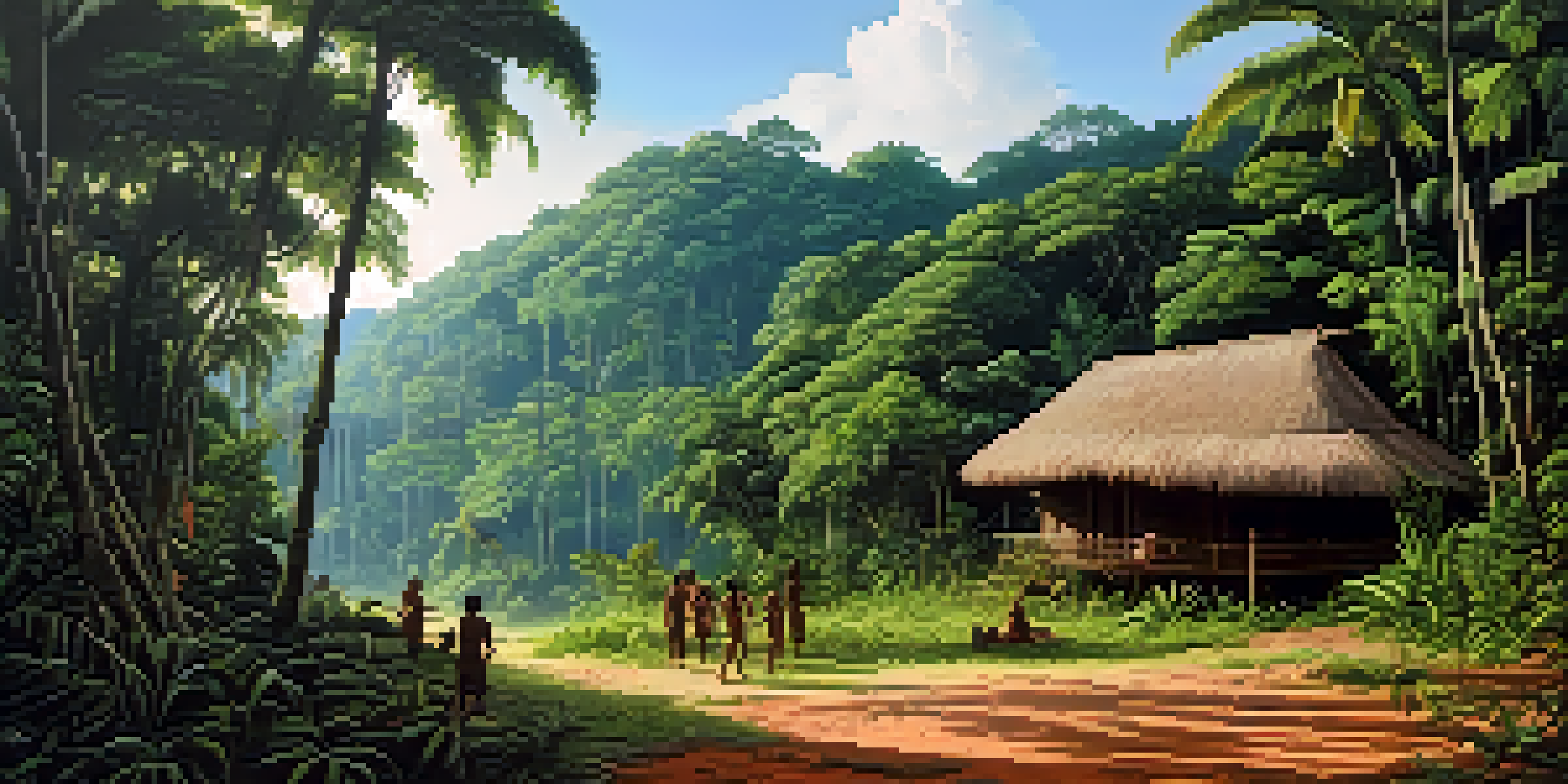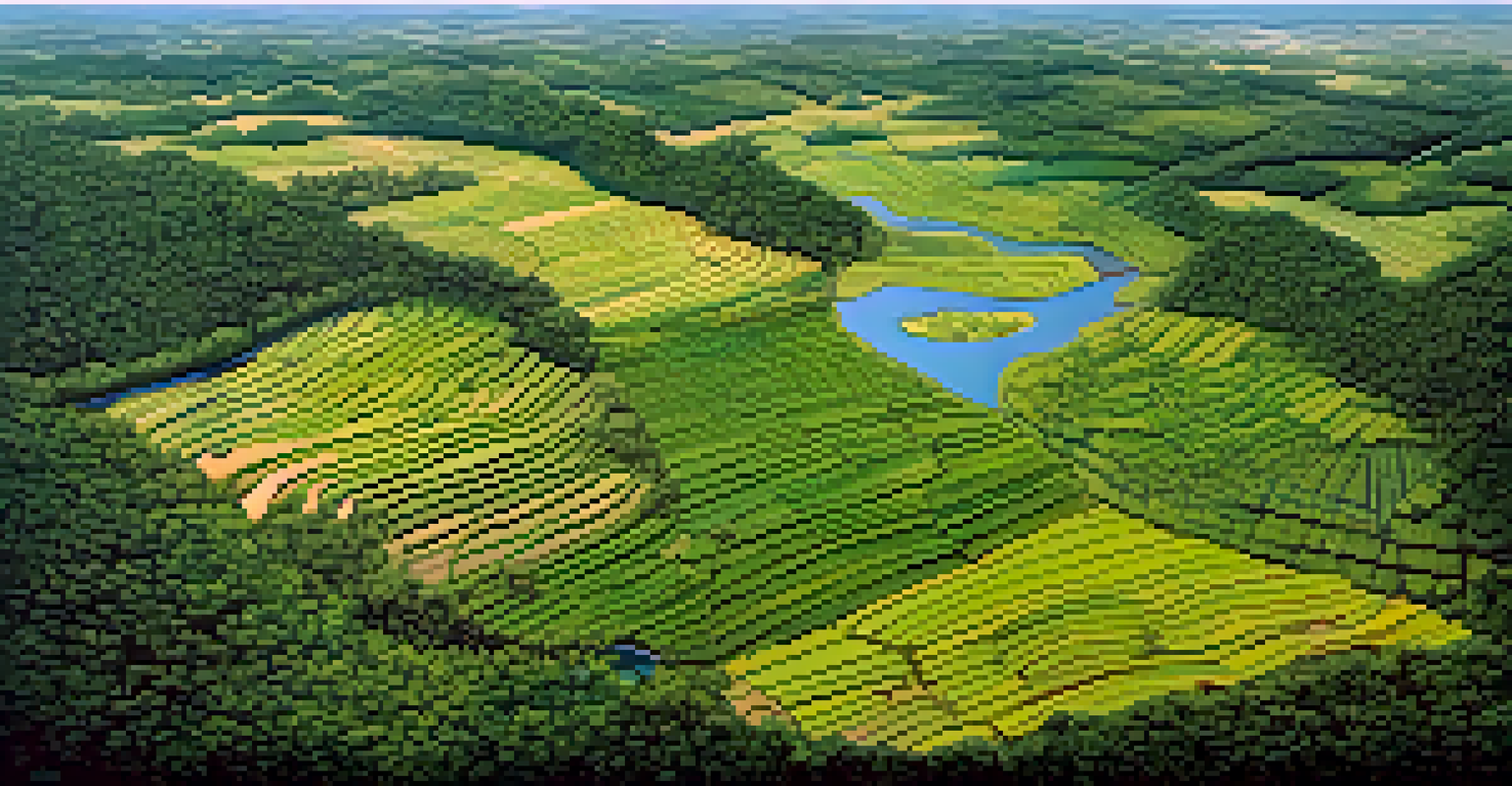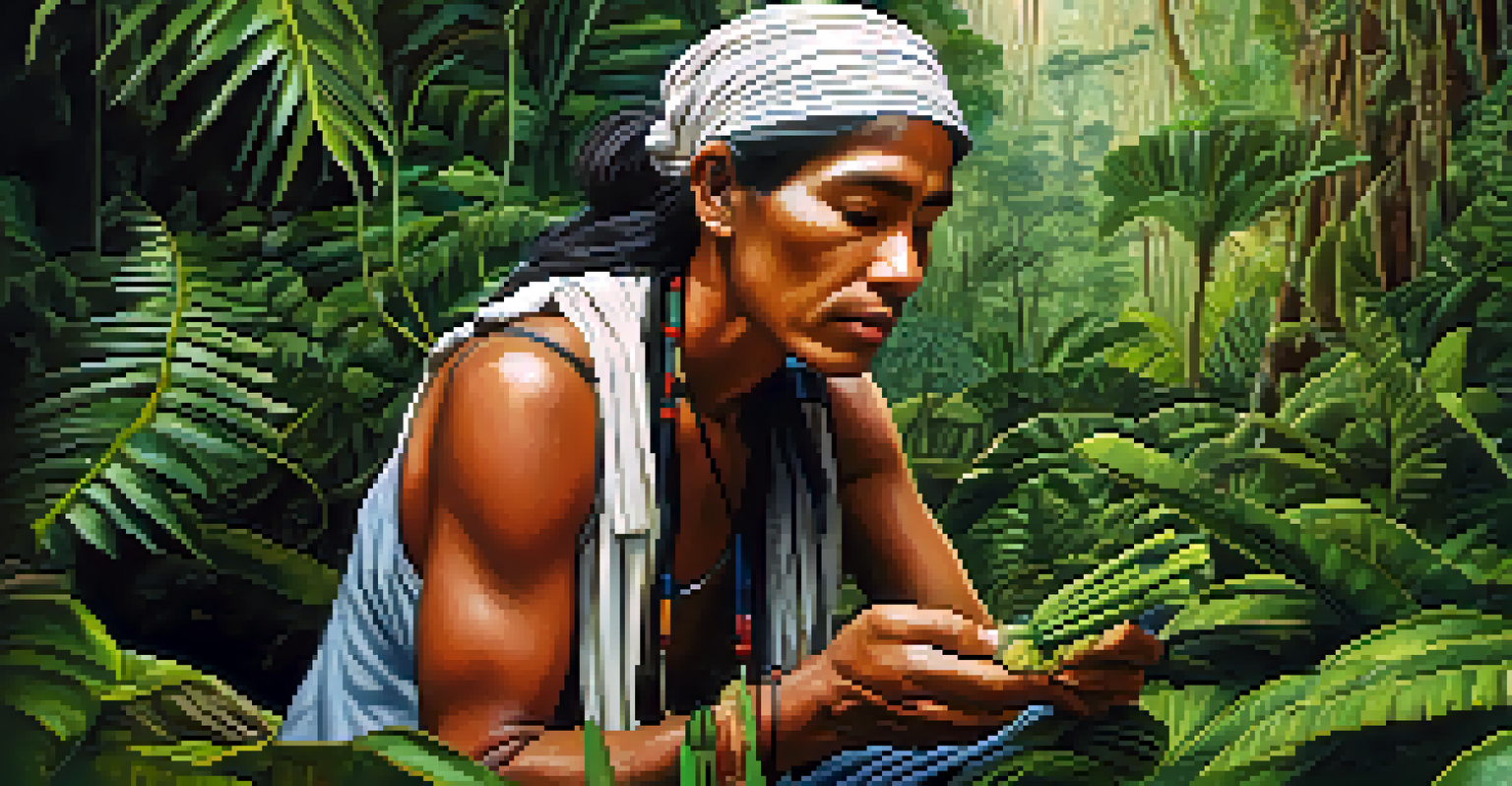Sustainable Practices in Indigenous Communities of Brazil

Understanding Indigenous Sustainability Traditions
Indigenous communities in Brazil have long practiced sustainable living, rooted deeply in their cultural beliefs and connection to nature. These traditions often involve a holistic view of the environment, where every element, from plants to animals, is seen as interconnected. This understanding fosters a deep respect for natural resources, ensuring they are used wisely and preserved for future generations.
Indigenous peoples are the guardians of biodiversity; their traditional knowledge is essential for conservation.
For example, the Yanomami people utilize the forest's resources without depleting them, gathering fruits, nuts, and medicinal plants in a way that maintains ecological balance. Their knowledge, passed down through generations, includes understanding seasonal cycles and the best times for harvesting. This practice not only sustains their community but also protects biodiversity in the rainforest.
Moreover, these sustainable practices highlight the importance of traditional ecological knowledge, which can inform modern conservation efforts. By recognizing the value of Indigenous wisdom, we can learn to approach sustainability in a more effective and respectful manner.
Shifting Agriculture: A Time-Tested Method
One of the most notable sustainable practices among Indigenous groups is shifting agriculture, often referred to as 'slash-and-burn' farming. This method involves clearing a small plot of land, cultivating it for a few years, and then allowing the area to regenerate while moving to a new plot. It may sound destructive, but when done correctly, it promotes soil fertility and biodiversity.

For instance, the Kayapó people have perfected this technique, ensuring they rotate their crops and allow sufficient recovery time for the land. By doing this, they not only maintain soil health but also support a rich ecosystem where various species can thrive. This agricultural cycle is a perfect example of how Indigenous practices can harmonize with nature.
Indigenous Knowledge Supports Sustainability
Traditional ecological knowledge from Indigenous communities is essential for managing resources sustainably and preserving biodiversity.
Interestingly, shifting agriculture contradicts the common perception of agriculture as permanently altering landscapes. Instead, it emphasizes regeneration and balance, teaching us valuable lessons about land stewardship that can be applied globally.
The Role of Traditional Knowledge in Biodiversity
Traditional ecological knowledge plays a crucial role in preserving Brazil's rich biodiversity. Indigenous communities have an intimate understanding of their local ecosystems, which enables them to manage resources sustainably. This knowledge encompasses everything from plant medicinal properties to animal behavior, contributing to a diverse and balanced environment.
The future will be shaped by how we respond to the needs and rights of Indigenous peoples.
For example, the Guarani people use a variety of plants for medicinal purposes, relying on their extensive knowledge of flora. This not only supports their health but also promotes the conservation of these plants within their habitat. By maintaining these practices, they help preserve the genetic diversity essential for ecosystem health.
By valuing Indigenous knowledge in biodiversity conservation, we can create more effective strategies that respect both nature and cultural heritage. Recognizing the contributions of these communities is vital for fostering a sustainable future.
Water Management Practices Among Indigenous Peoples
Water is a vital resource, and Indigenous communities in Brazil have developed innovative methods to manage it sustainably. Many groups, such as the Xavante, practice traditional water conservation techniques that ensure clean water sources are maintained for both people and wildlife. This includes seasonal practices that align with the natural flow of water in their ecosystems.
Additionally, these communities often create structures like terraces or small dams to control water flow and prevent erosion. By working with the natural landscape, they enhance the availability of water and create habitats for various aquatic species. This approach not only secures their water supply but also supports the overall health of the ecosystem.
Community-Led Conservation Efforts
Indigenous communities are proactively leading conservation initiatives, such as establishing Indigenous Protected Areas to safeguard their lands.
Through these practices, Indigenous groups demonstrate the importance of sustainable water management, providing a blueprint for other communities facing water scarcity issues. Their methods serve as a reminder that sustainable practices can be both effective and rooted in cultural heritage.
The Impact of Modernization on Indigenous Practices
While Indigenous communities have long practiced sustainability, modernization poses significant challenges to these traditions. Encroachment by agriculture, mining, and urban development threatens their land and resources, disrupting their traditional ways of life. As a result, many Indigenous peoples face the difficult task of balancing their cultural practices with the pressures of modern society.
For instance, the expansion of cattle ranching in the Amazon has led to deforestation and loss of biodiversity, directly impacting Indigenous livelihoods. This loss not only affects their immediate resources but also undermines their cultural identity, which is intricately tied to the land. The struggle to maintain their practices in the face of such pressures highlights the urgent need for protective measures.
Addressing these challenges requires collaborative efforts that respect Indigenous rights and promote sustainable development. By engaging with these communities, we can create solutions that honor their traditions while also addressing contemporary environmental issues.
Community-Led Conservation Initiatives
In response to the threats posed by modernization, many Indigenous communities in Brazil are taking the lead in conservation efforts. These initiatives often focus on protecting their lands and resources through self-governance and traditional practices. By asserting their rights and knowledge, these communities are making significant strides in preserving biodiversity.
An example of this is the creation of Indigenous Protected Areas (IPAs), where communities manage and conserve their land. The Suruí tribe, for instance, established their own conservation area to protect their forest and wildlife from external threats. This initiative not only safeguards their resources but also reinforces their cultural identity and sense of belonging.
Supporting Indigenous Rights is Vital
Recognizing and supporting Indigenous rights is crucial for the sustainability of their practices and the overall health of the environment.
These community-led efforts underscore the effectiveness of Indigenous stewardship in conservation. They offer a powerful model for integrating traditional knowledge with modern conservation practices, highlighting the importance of local involvement in environmental protection.
The Importance of Supporting Indigenous Rights
Supporting Indigenous rights is crucial for the sustainability of their practices and the health of the environment. Legal recognition of land rights empowers these communities to protect their territories from exploitation and degradation. By securing their rights, we can help preserve the invaluable knowledge and practices that have sustained them for generations.
Furthermore, acknowledging Indigenous sovereignty fosters collaboration between Indigenous peoples and external stakeholders, such as governments and environmental organizations. This partnership can lead to more effective conservation strategies that respect cultural heritage while addressing pressing environmental challenges.

Ultimately, supporting Indigenous rights is not just about protecting a way of life; it's about safeguarding the planet's future. When Indigenous communities thrive, so does the biodiversity that sustains us all, creating a healthier environment for everyone.